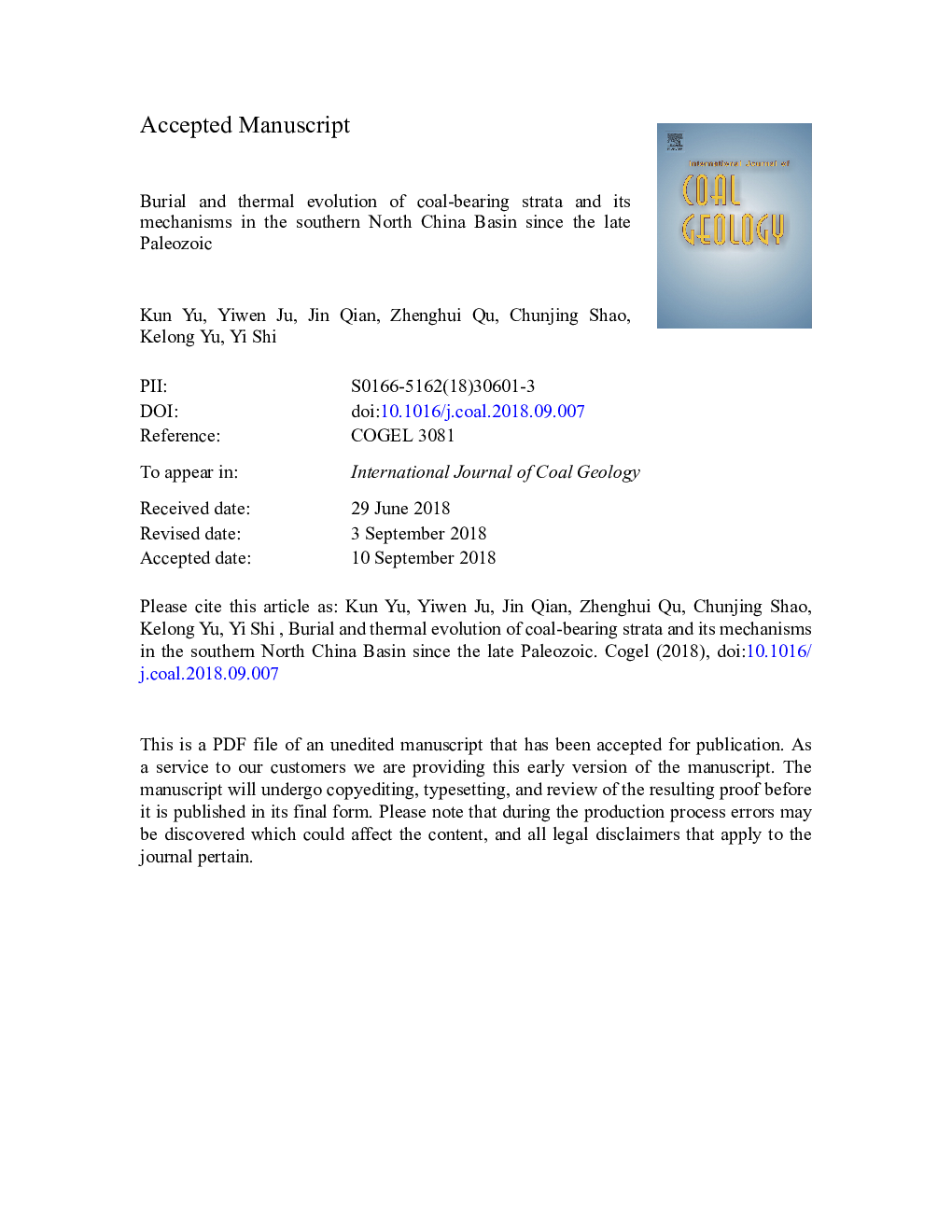| Article ID | Journal | Published Year | Pages | File Type |
|---|---|---|---|---|
| 11029473 | International Journal of Coal Geology | 2018 | 57 Pages |
Abstract
During the interaction between the South China plate and the North China plate, the southern North China Basin (SNCB) underwent a strong tectonic thermal evolution in the early Mesozoic. Recently, burial history reconstruction and thermal maturity simulation of coal-bearing strata from the Late Carboniferous to the present were carried out in the SNCB. Rock-Eval pyrolysis (12 samples), vitrinite reflectance (60 samples), apatite fission track (AFT) analysis (17 samples), and PetroMod 1D were performed on wells located in the SNCB. Geothermal gradients were found to range between 30.3 and 36.4â¯Â°C/km, averaging 31.0â¯Â°C/km, and present heat flow was found to vary between 51 and 58, averaging 55â¯mW/m2. The paleo heat flow model with higher heat flow peaks of 86â¯mW/m2 during the first rifting phase resulted in the best fit between the calculated and the observed vitrinite reflectance and bottom hole temperatures in the modeling. Using this model of thermal maturity history combined with AFT analysis, we analyze the main hydrocarbon generation stages and discuss the coupling relationship of thermal maturity history with tectonic evolution. The results indicate that tectonic activities restrict the thermal maturity evolution of source rocks to a large extent by controlling the geotemperature. The thermal history demonstrates that two phases of heating (315-163â¯Ma, 83-38â¯Ma, depositing) happened to the source rocks, separated by two cooling (163-83â¯Ma, 38-23â¯Ma, uplifting) events. The maturity history indicates that the process of hydrocarbon generation can be divided into three stages in the SNCB (315-163â¯Ma, thermal genesis gas generation stage; 163-83â¯Ma, gas reservoir destruction stage; 83-0â¯Ma, secondary biogas generation stage). Hydrocarbon generation started as early as 198â¯Ma with a peak at 162â¯Ma, and expulsion started at around 195â¯Ma. The Taiyuan and Shanxi formations' source rocks reached a high maturity (1.0%â¯<â¯Roâ¯<â¯1.3%) with a greater potential for hydrocarbon generation, and the Xiashihezi formation is mid-mature (0.7%â¯<â¯Roâ¯<â¯1.0%) with limited hydrocarbon generation potential at the present day.
Related Topics
Physical Sciences and Engineering
Earth and Planetary Sciences
Economic Geology
Authors
Kun Yu, Yiwen Ju, Jin Qian, Zhenghui Qu, Chunjing Shao, Kelong Yu, Yi Shi,
